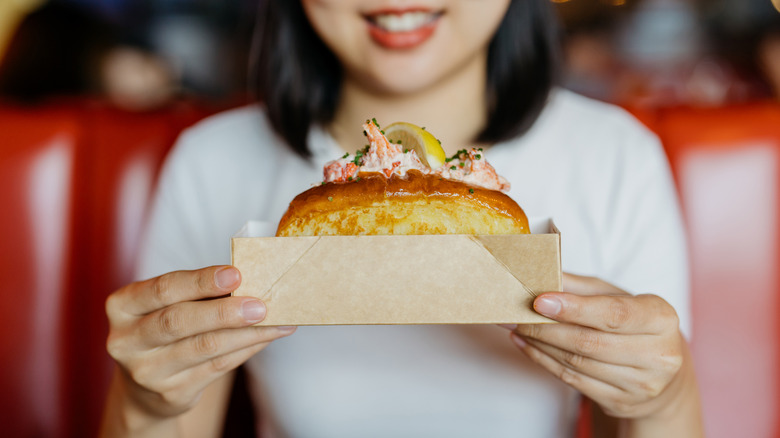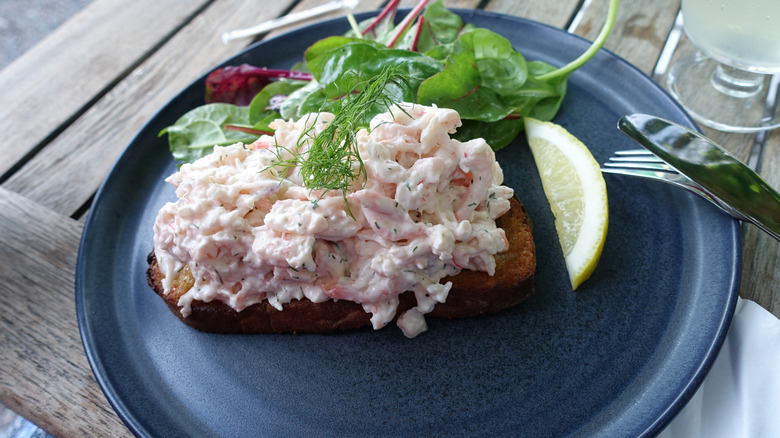The Type Of Fish That Allows You To Make A Cheaper Lobster Roll
Lobster rolls are a New England regional delicacy that has become beloved from coast to coast. While there's a difference between Maine- and Connecticut-style lobster rolls (it has to do with both temperature and filling), we don't like to discriminate. Whether you serve them cold and dressed like an upgraded tuna salad with mayo and crunchy veggie filling or hot and dripping with drawn butter, a lobster roll is what some of our Yankee friends call "wicked good." But if you live far away from a reliable source for fresh lobster, or if you simply find the price of this high-end seafood to be too rich for your budget, you have some thriftier options.
We spoke with Kory Foltz, executive chef of Sunseeker Resort in Charlotte Harbor, Florida, about what to sub for lobsters in a less-spendy "lobster" roll. As is the case with imitation crab, the answer is fish. "[C]rab, or white fish like cod or halibut, are great, cheaper options," he divulges. "Shrimp can work as well, as it is similar in texture when cooked appropriately, [and] some chefs have mentioned monkfish as an option as well." The thesis here is that texture is the defining characteristic of seafood subs for lobster meat, so ideally your protein of choice will be flaky and airy. If you go with shrimp, you want fat, juicy specimens that have been cooked only lightly and then shocked in an ice bath so that the cut-up chunks have an attractive bite to them.
The supporting details make a cheaper lobster roll great
Regardless of what seafood you use in your "lobster" roll, you need to treat it right so that you impart those fresh, summertime flavors that make real lobster rolls so darn enjoyable. Just because you won't be eating your roll at a weathered picnic table on a rocky beach in Cape Cod doesn't mean that you can't go the extra mile to make your dupe as authentic as possible! "To make it work," says chef Foltz, "gently poach or steam the fish, break it into bite-sized pieces, and use a mayo-based dressing with lemon and celery." Yes, he advocates for the Maine-style roll with mayonnaise and crunch. We do, too, because these flavors arguably do a better job of masking the fact that you are imitating lobster, compared to the more pared-down hot butter treatment.
New Englanders will talk your ear off about exactly how much mayo should go in a lobster roll. Do you use enough that you get a rich taste of the condiment and a silky, unctuous homogeneity to the seafood mixture? Or are you looking for a spare amount that will just barely bind the chunks of protein, keeping the focus squarely on the "lobster"? Of course, that's a matter of personal taste. There's one aspect of the lobster roll that's non-negotiable, however. "Most importantly, don't skip the buttered-then-toasted buns [...] it is a must with a lobster roll," Foltz shares.

